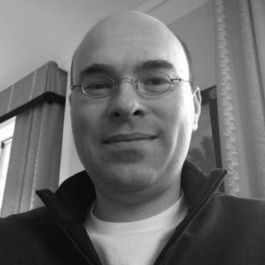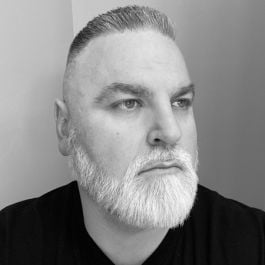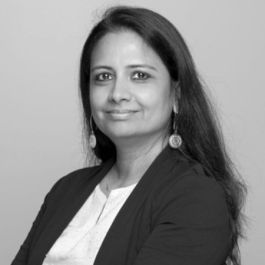At Donnelley Financial Solutions, a culture of cohesive collaboration fuels forward-thinking momentum.
Specializing in end-to-end risk and compliance solutions, the Chicago-based fintech — commonly abbreviated as DFIN — sees itself as an essential partner for public and private companies in global capital and investment markets. Helping clients manage portfolios and analyze data using AI and automation, the company was founded in 2016 and has since sought to stay innovative in a complex, ever-fluctuating regulatory environment.
With New ActiveDisclosure, a co-authoring cloud-native platform, DFIN aims to deliver faster, smarter, and more secure financial reporting and SEC filing for clients. DFIN’s initiatives around New ActiveDisclosure are still ramping up, as the company pursues a five-year “44 in ‘24” goal of doubling the proportion of its sales derived from software. The success of DFIN’s mission in this respect depends upon engineers to display leadership skills while also working closely with colleagues in flexible, remote environments.
As DFIN’s senior software architect, Chris Tanger oversees what he calls the “technological backbone” of New ActiveDisclosure, driving collaboration across the company’s development teams. What motivates him to come into work each day is the innate understanding that his contributions are valued.
“Empowerment is a huge topic at DFIN,” he explained. “I’ve never worked anywhere that empowers individuals to grow, succeed and take on additional responsibility.”
That’s also been the experience of Sujatha Ramkumar, vice president of engineering for New ActiveDisclosure. Since joining DFIN earlier this year, her responsibilities have ranged from driving engineering projects associated with the new technology to outlining DFIN’s longer-term strategy.
“How do I work collaboratively, bring people together, understand their perspective, make sure that they feel heard and seen, and still approach things empathetically, ultimately bringing out the best solution across the board?” Ramkumar said of her approach. “That is vital. It is the oxygen of a good culture.”
For Ray Kaleho, DFIN’s principal site reliability engineer, one of the most exciting aspects of his position is collaborating with Tanger, Ramkumar, and other talented techies.
“Whether it’s our cloud IT, our network IT or our architecture group, I work with an immense number of really sharp people, who are very good at what they do,” he said. “They all lack the wrong kind of ego.”
Tanger, Ramkumar, and Kaleho sat down with Built In to discuss New ActiveDisclosure and the culture of empathy and mutual support that keeps DFIN at the forefront of its industry.
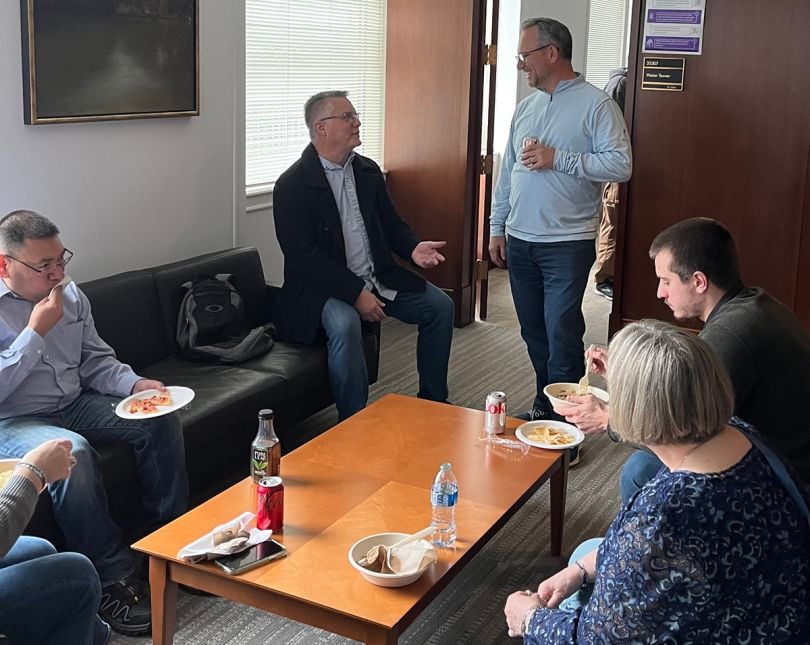
Collaboration is essential to DFIN’s success in financial and regulatory reporting. How does that collaboration manifest in your work on a day-to-day basis?
Ramkumar: Being a leader for a large organization means bringing together people with different backgrounds, cultures, ages, gender, and experience levels, and then working together to deliver. Collaboration is essential. With so many diverse backgrounds, it’s important to identify strengths and areas for development. It is also important to make sure that everyone is working on something that motivates them while also helping the business move forward. From my perspective, it’s like conducting an orchestra. I need to know the capabilities of every instrument in the orchestra, and bring them together in the right way. There are many communication channels we think about, but I believe in one-on-one meetings to get a connection going. If I take care of them individually, people will take care of my business.
Tanger: Last week, someone came to me with a technical question to which I didn’t have an answer. I wasn’t the best person to answer the question and so instead I added others to the chat. In this case, answering the question meant working together outside of our silos, giving everyone the rundown, and sharing chat histories. One of our teams has been championing building knowledge repositories and know-how for onboarding to help people get started. I pulled in one of our key people working on that project, and she immediately provided materials that helped. At the same time, she was building more documentation based on the process of helping someone answer the question, and filled in additional gaps for onboarding.
Kaleho: The fractal nature of reaching out to people reveals how willing everybody is to jump in. If I don’t know an answer, I put you into contact with a person who might know. It’s a willingness to join in on any effort that distinguishes us.
Tell me about New ActiveDisclosure as a technology focus for DFIN.
Tanger: New ActiveDisclosure is a collaborative document composition system, which differs from word processing, like Microsoft Word, because you insert artifacts from other documents that are dynamically linked. In the financial reporting space, you need to pull in data tables from Excel workbooks, legalese boilerplate, and different snippets of text. When source documents are updated, there’s a streamlined wizard process that auto-updates the main document.
On top of that, it’s easier to go into the document, annotate certain sections and assign tasks to other collaborators editing the document at the same time. You can complete your task list then go through and respond; you can see other people editing in real time and see which sections they’re in. Permissioning is on a section-by-section level; some people can see some sections, others can only view, others can edit. ActiveDisclosure allows a whole team to come together and create one of these documents in parallel.
Kaleho: Along with that, there’s all of the other compliance procedures, all of the auditing, permissioning and the security behind that. All of that’s right there, too. And approval workflows: you upload a new workbook with new financial data in it, and then someone whose rights are higher in the document approve those new numbers.
What impact has DFIN’s “44 in ‘24” goal had on the workplace culture?
Tanger: Forty-four in ‘24 is one way of saying our goal of attaining 44 percent of revenue from software services by 2024. It brings a mentality of enthusiastic change. People realize that we can recreate this product to do new things. They’re excited about the transformation of our products and our company culture.
What’s the secret to modernizing legacy systems and convincing people to evolve past outdated solutions?
Ramkumar: It’s about looking at individual functionalities and bringing them together. In my first few months, I’ve observed the structure of DFIN as promoting quality and consistency across the board. That’s critical for any foundational systems to be driven more into the future. That structure needs to happen at the team level and also at the organization level. There are multiple vertical product lines, like New ActiveDisclosure and Venue Data Room. Teams are formed, and they quickly get up and running in a productive manner: SRE, architecture, QA, security. These teams horizontally support vertical product lines; they bring consistency across the company. I believe that’s a good model and one way to look at DFIN as a big team, rather than segregating us by product.
We need to have independence within teams, and creative ideas coming from teams. At the same time, the company’s core beliefs should be shared across the platform. Having the model I’ve just explained is a sign of a mature organization. I haven’t seen it in startups, which are trying to figure out and form teams. At DFIN, hundreds of projects are going on. Hundreds of different client demands need to be met. Sustained consistency establishes the brand.
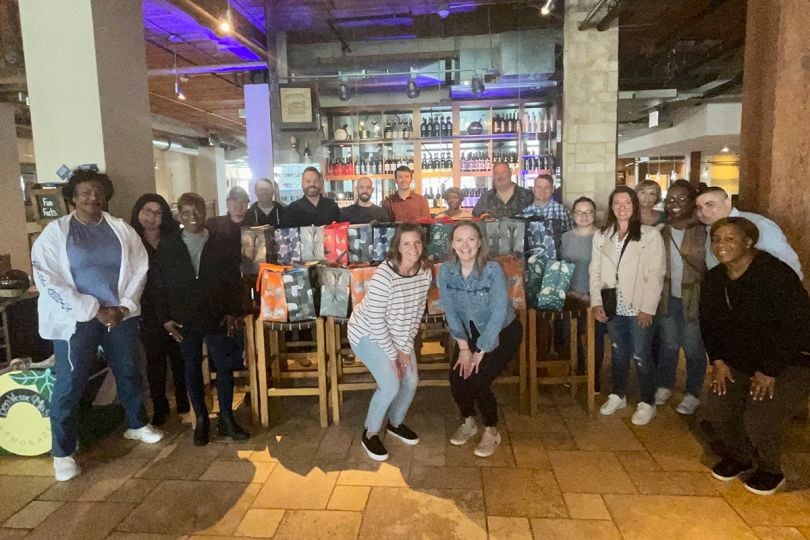
How would you describe the culture at DFIN? What unifies you and your colleagues?
Ramkumar: Making empathy central to the company’s culture is crucial for its success, no matter what. That’s my personal philosophy. Empathetic workplaces enjoy stronger collaboration, great morale and less attrition, while responding well to adversity. At DFIN, it’s all about people and how empathetic they are, how respectful they are. I want to build that within New ActiveDisclosure. Being an empathetic leader does not take away your ability to make tough decisions. I don’t think that way. It doesn’t even mean that I always agree; it means that I understand.
Tanger: Throughout the organization, I see enthusiasm. I think of DFIN as the best of two worlds — where you get some of the support and the infrastructure that comes with being a large, corporate concert yet you get the mentality of a startup — to the extent that’s possible at our size. It’s a great combination. The vision and enthusiasm is contagious and shared on both the product and engineering sides.
What persuaded each of you to join DFIN?
Kaleho: I was a contractor before I became a full-time employee, so I had the opportunity to try DFIN out before I bought in. And that’s the experience that convinced me. I’m all about growth, all the time, relentlessly. That’s hugely important to me. It’s one of my main driving factors. Within the few months that I was here as a contractor, I saw that my contributions mattered and my voice was heard. You grow when you’re around people who are really sharp and share the same mindset. That’s why I put a ring on my finger, so to speak.
Tanger: For me, it was a strong sense that I would be valued and be able to move the needle. I could have gone somewhere else where I was just an anonymous face in the crowd, but DFIN gave me an opportunity to try things out and have an effect. It’s a place for people who are startup-minded and want to be part of change but might not be up for living on stock options. There’s less risk. I have a son going off to college, as many of us do, so at my age, that was particularly appealing. We’re linked to regulatory customers. Within economic ups and downs, everyone still needs to file reports with the government.
Ramkumar: Because of the nature of my role, I had to go through several rounds of interviews, and with every round new people convinced me that this was the place I wanted to be because of the spirit of trust, connection and empathy. That’s what sold me. Also important was vision: what people said about where they have been and where they want to go. When I talked to leadership, they clearly knew what they wanted to be doing in the long term — not only sustaining what they’re doing, but also looking at different markets and taking the plunge of embracing the future.


